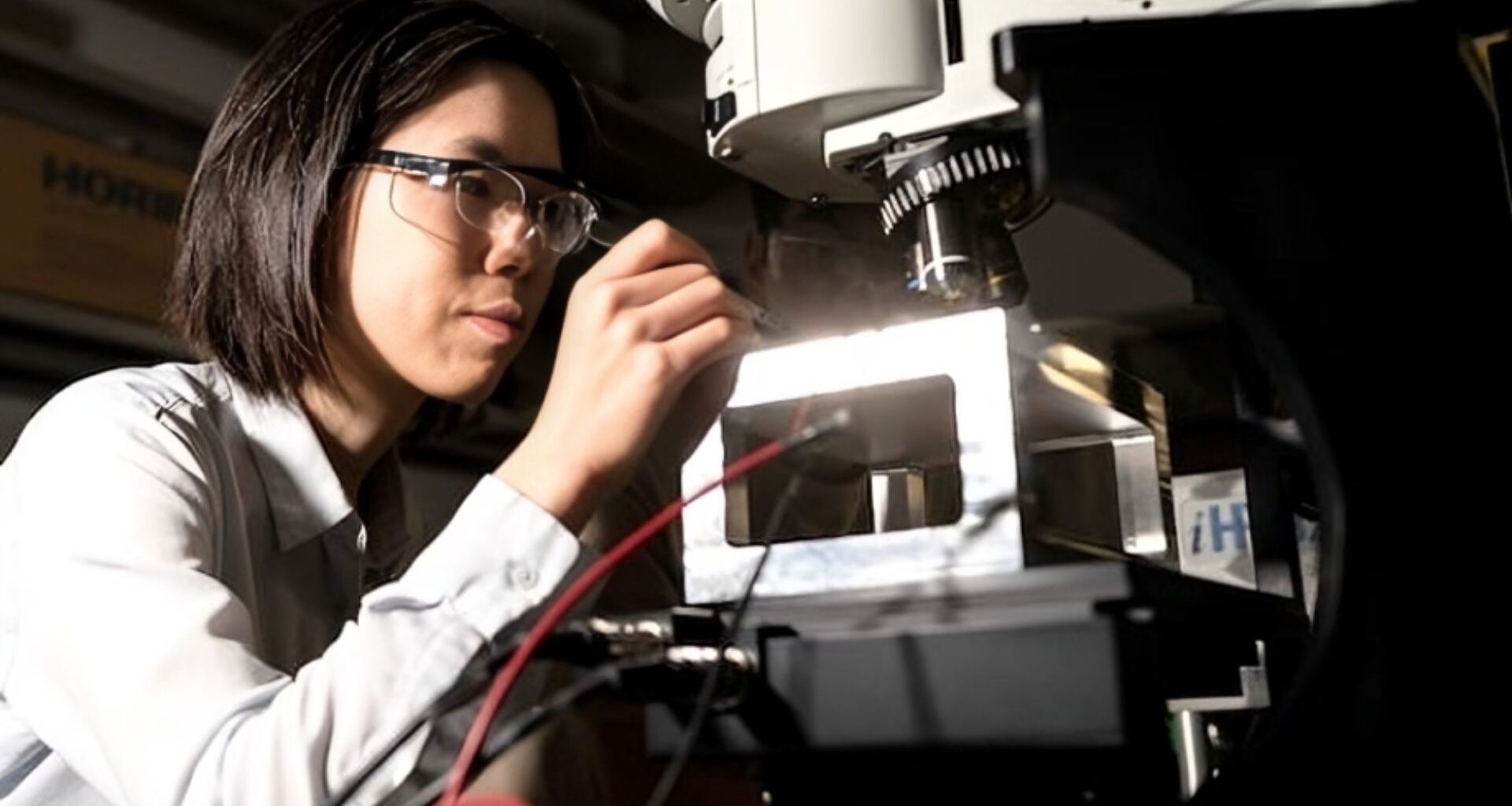Light isn’t just illuminating materials anymore, it’s moving them.
Scientists at Rice University have discovered that beams of light can physically shift atoms in a class of ultra-thin semiconductors known as Janus transition metal dichalcogenides (TMDs), unlocking a new way to tune materials for next-generation optical and quantum technologies.
The finding offers a rare glimpse into how light and matter interact at the atomic level.
When laser light hits these Janus TMDs, it doesn’t just pass through, it exerts a mechanical push on atoms inside the crystal, changing its symmetry and optical behaveior.
The phenomenon, called optostriction, could help build faster and cooler computer chips that use light instead of electricity.
“In nonlinear optics, light can be reshaped to create new colors, faster pulses, or optical switches that turn signals on and off,” said Kunyan Zhang, a Rice doctoral alumna and first author of the study.
“Two-dimensional materials, which are only a few atoms thick, make it possible to build these optical tools on a very small scale.”
Janus materials are a special subtype of TMDs, named after the two-faced Roman god of transitions.
Their top and bottom atomic layers are made of different chemical species, creating an internal imbalance that gives the crystal built-in polarity.
This asymmetry makes them particularly sensitive to light, electric fields, and mechanical strain, allowing researchers to “tune” their behavior more precisely than ordinary semiconductors.
When light pushes back
Using laser light of different colors, the Rice team studied how a two-layer Janus TMD—molybdenum sulfur selenide stacked on molybdenum disulfide—responded to illumination through a process called second harmonic generation (SHG). In SHG, a material emits light at twice the frequency of the incoming beam.
They found that when the incoming light matched the material’s resonant frequencies, the emitted SHG pattern distorted—a sign that atoms were being displaced.
“We discovered that shining light on Janus molybdenum sulfur selenide and molybdenum disulfide creates tiny, directional forces inside the material, which show up as changes in its SHG pattern,” Zhang said.
Under normal conditions, the SHG pattern looks like a six-pointed flower, mirroring the crystal’s symmetry.
But as light pushed the atoms, “this symmetry breaks—the petals of the pattern shrink unevenly,” Zhang explained.
The team traced this distortion to optostriction, where the electromagnetic field of light exerts a small but measurable mechanical force on the atoms.
Because Janus materials have uneven compositions, this push is amplified by strong interlayer coupling, making them ideal for studying and harnessing light-driven atomic motion.
Lighting the future
“Janus materials are ideal for this because their uneven composition creates an enhanced coupling between layers, which makes them more sensitive to light’s tiny forces—forces so small that it is difficult to measure directly, but we can detect them through changes in the SHG signal pattern,” Zhang said.
Such sensitivity could help create optical chips that route and process light instead of electricity, drastically improving energy efficiency.
“Such active control could help design next-generation photonic chips, ultra-sensitive detectors, or quantum light sources—technologies that use light to carry and process information instead of relying on electricity,” said Shengxi Huang, associate professor of electrical and computer engineering at Rice.
By showing that light can quite literally nudge atoms in two-dimensional semiconductors, the research opens a path toward tunable, light-responsive materials that could reshape the future of computing and sensing, one photon push at a time.
The study appears in the journal ACS Nano.
With over a decade-long career in journalism, Neetika Walter has worked with The Economic Times, ANI, and Hindustan Times, covering politics, business, technology, and the clean energy sector. Passionate about contemporary culture, books, poetry, and storytelling, she brings depth and insight to her writing. When she isn’t chasing stories, she’s likely lost in a book or enjoying the company of her dogs.
